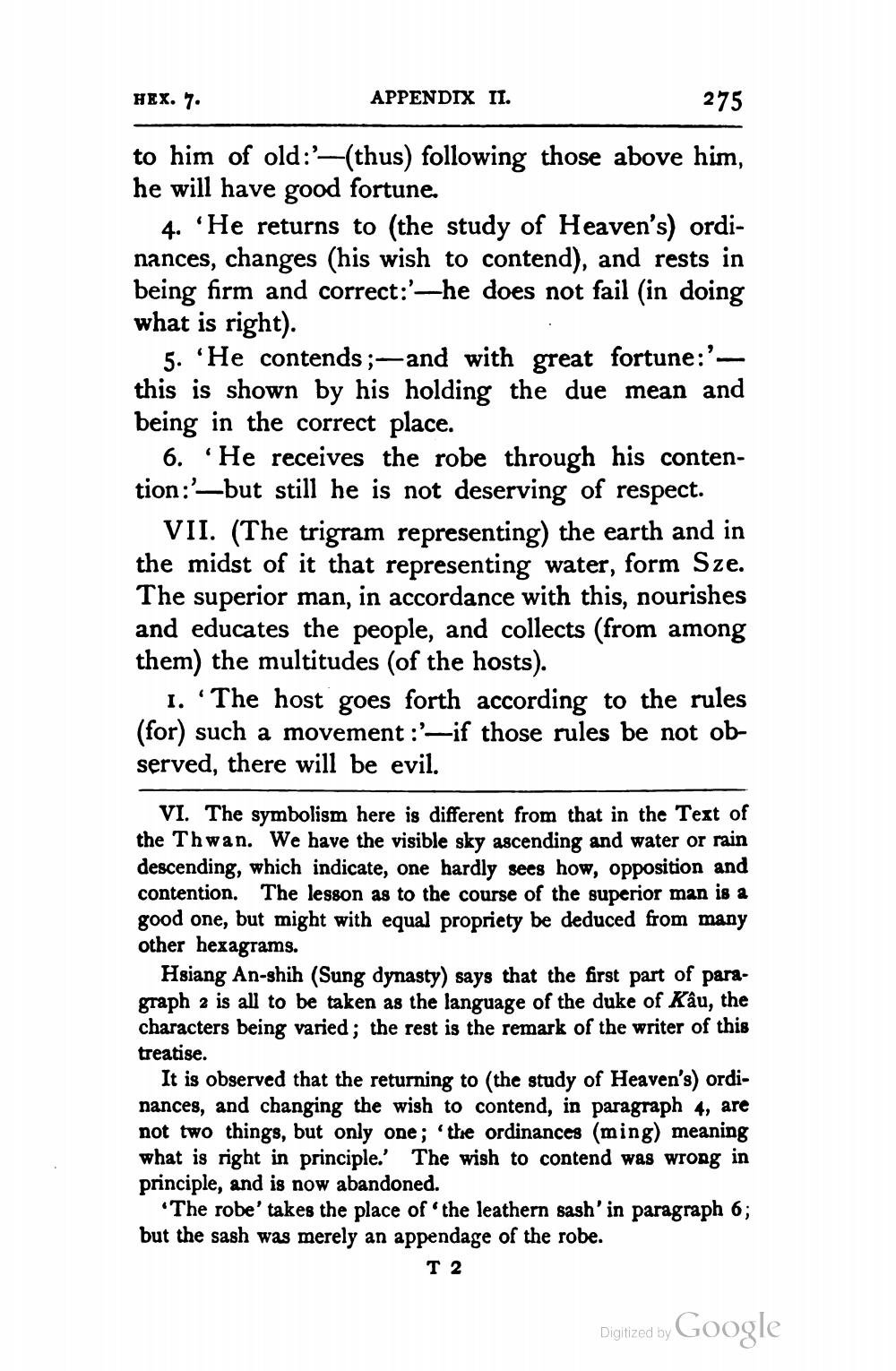________________
HEX. 7. APPENDIX II.
275 to him of old:’—(thus) following those above him, he will have good fortune.
4. 'He returns to the study of Heaven's) ordinances, changes (his wish to contend), and rests in being firm and correct:'-he does not fail (in doing what is right).
5. 'He contends ;-—and with great fortune:'this is shown by his holding the due mean and being in the correct place.
6. He receives the robe through his contention:'-but still he is not deserving of respect.
VII. (The trigram representing) the earth and in the midst of it that representing water, form Sze. The superior man, in accordance with this, nourishes and educates the people, and collects (from among them) the multitudes (of the hosts).
1. “The host goes forth according to the rules (for) such a movement ::-if those rules be not observed, there will be evil.
VI. The symbolism here is different from that in the Text of the Thwan. We have the visible sky ascending and water or rain descending, which indicate, one hardly sees how, opposition and contention. The lesson as to the course of the superior man is a good one, but might with equal propriety be deduced from many other hexagrams.
Hsiang An-shih (Sung dynasty) says that the first part of paragraph 2 is all to be taken as the language of the duke of Kâu, the characters being varied; the rest is the remark of the writer of this treatise.
It is observed that the returning to the study of Heaven's) ordinances, and changing the wish to contend, in paragraph 4, are not two things, but only one; 'the ordinances (ming) meaning what is right in principle. The wish to contend was wrong in principle, and is now abandoned.
The robe' takes the place of the leathern sash' in paragraph 6; but the sash was merely an appendage of the robe.
T 2
Diglized by Google




